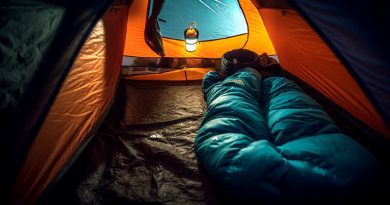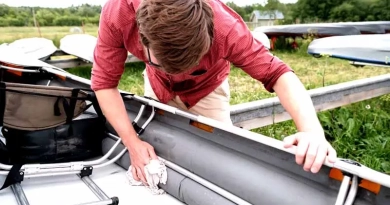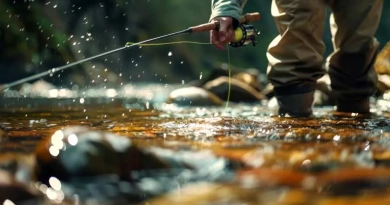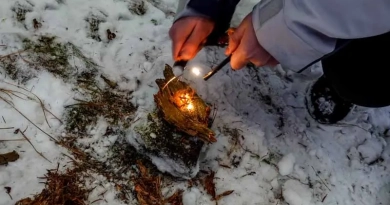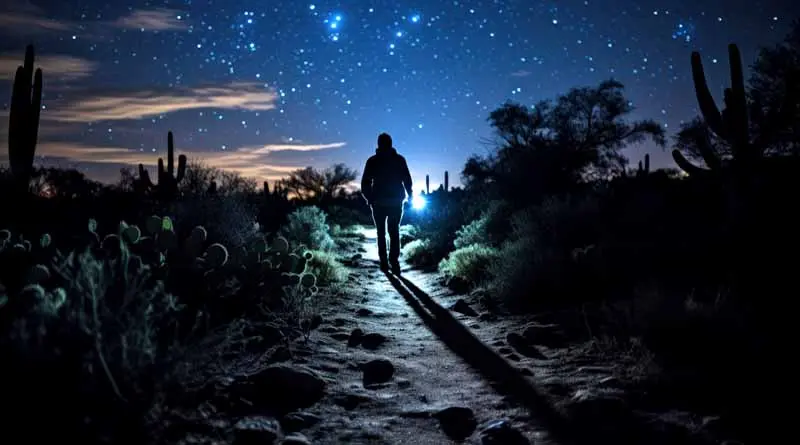
Embracing the Shadows: How to Safely Hike in the Dark
Under the cloak of night, the woods whisper a different tale, one woven with mystery and shadows. As the sunset fades and darkness envelopes the path, the question arises: How do I deal with hiking in the dark? It’s a challenge that calls for preparation, respect for the night’s uncertainties, and a keen sense of adventure.
Mastering Night Hiking: Facing the Unknown
When the sun dips below the horizon and darkness cloaks the landscape, familiar trails morph into a realm of shadows, presenting unique challenges even to seasoned hikers. Hiking in the dark turns the known paths into an enigmatic world, where heightened senses and preparedness become your best allies.
The Challenges of Night Hiking
1. Reduced Visibility: At night, the absence of natural light renders the terrain mysterious and treacherous. The lack of visibility can make navigation difficult, as familiar markers and paths conceal themselves in the darkness. This is the primary hurdle, as obscured details of the terrain increase the likelihood of missteps.
2. Heightened Risks: The darkness exacerbates common trail hazards. Loose rocks, sudden drops, and unexpected natural obstacles can become serious dangers when unseen. Additionally, wildlife that is active at night might cross paths with hikers, potentially leading to dangerous encounters if one is not vigilant.
3. Psychological Effects: The isolation and enveloping darkness of night hiking can intensify feelings of solitude and fear. For many, the darkness amplifies every sound and stirs the imagination, which can transform the solo hiking experience into a psychological challenge as much as a physical one.
Navigating Night Hiking: Solutions and Precautions
To safely navigate the nocturnal trails, hikers must adapt their strategies and equipment to address these challenges effectively.
1. Right Gear: Essential Lighting A high-quality headlamp is indispensable for night hiking. It should have a strong, reliable beam and a lengthy battery life to last through your hike. Packing extra batteries, or even a backup light source like a handheld flashlight or another headlamp, ensures you are never left in the dark.
2. Familiarize with the Terrain: Knowing your trail in advance can significantly mitigate the stress and danger of night hiking. If possible, hike the trail during the day to familiarize yourself with key landmarks, turns, and tricky sections. This familiarity can be a crucial advantage when visibility is reduced.
3. Stay Alert: Enhance your night-time hiking experience by relying on other senses. Listening for the sounds of running water or rustling wildlife can alert you to environmental changes. Feeling the path underfoot can help in navigating unseen obstacles.
Best Practices for a Safe Night Hike
Implementing effective night hiking practices is essential for safety and enjoyment.
Step 1: Choose Suitable Trails Opt for well-known or less complicated trails for your night hikes. Trails with fewer technical challenges and clear markings are ideal for building your confidence and skill in night hiking.
Step 2: Light Up Wisely Adjust your headlamp according to the needs of the terrain. A wider beam can help in open areas, while a focused beam is better for trail navigation. Use a red light to preserve night vision when the situation allows, such as when checking maps or inside your tent.
Step 3: Go Slow The darkness necessitates a slower pace to safely manage the uncertainties of the trail. Taking your time ensures that you can carefully place each step and reduces the risk of accidents.
Step 4: Hike with Friends If possible, hike with a companion. Not only does this improve safety by ensuring immediate help in case of emergencies, but it also enhances the overall experience by sharing the unique joys and challenges of night hiking.
Step 5: Communicate Your Plan Always let someone know your hiking plan, including the trail, expected return time, and any possible deviations. After completing your hike, check in to confirm your safe return.
Step 6: Emergency Preparedness Equip yourself with emergency essentials: a whistle for signaling, a reliable map and compass, and a fully charged mobile phone in a waterproof case for emergency calls or GPS use. Knowing basic first aid and emergency procedures can make a critical difference in urgent situations.
Essential Tools and Resources
- High-Quality Headlamp and Backup Light
- Trail Maps and GPS Device
- Extra Batteries or Charging Pack
- Safety Whistle and Basic First Aid Kit
- Appropriate Footwear and Reflective Clothing
Mastering the Night
As the first light of dawn edges over the horizon, dispelling the darkness, the satisfaction of having navigated the night trail is both exhilarating and empowering. Hiking in the dark doesn’t have to be a daunting experience filled with trepidation. With the right preparation, equipment, and mindset, it can transform into an enchanting adventure that pushes the boundaries of your hiking experience, revealing a whole new dimension of the wilderness to be explored and respected. Embrace these tips, respect the darkness, and watch as the night trails turn into familiar friends.

